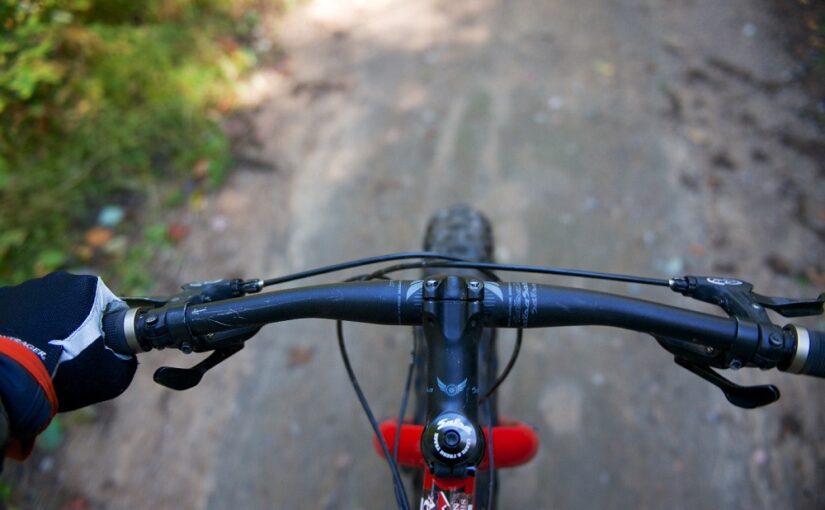Mountain biking is a great way to exercise and spend time surrounded by nature.
It can also have a huge impact on the environment.
We know Ontario Parks trails are a favourite among mountain bikers, so we wanted to share some of our best practices to protect where you bike.
Stay one track-minded
The key to protecting trails while biking is to stick to the original track and avoid any shortcuts. This means no cutting corners or diverting trails.
If a trail is too difficult in its current state, try out a different trail instead of creating a new one.

As fun as it can be to create your own trail, we ask that you don’t do it in a provincial park.
The trails you’ll find in our parks have been set aside and protected for current and future generations. Building unauthorized trails can directly impact this by introducing invasive species and causing unnecessary erosion.
If you see a new trail in our parks, let our staff know so we can prevent any further damage.
Avoid a washout

Check the forecast before you bike to make sure you aren’t heading into a muddy park.
Riding when the trails are wet can cause unnecessary damage to the trail.
Not only is it dangerous to the park, it can also be dangerous for you, so stay safe and avoid wet trails.
Even when you’re biking in good weather, try to avoid biking through standing water.
The puddles along the trail are home to many different species that the area needs.
Take the time and avoid the water and get off your bike and walk around it.
Best biking behavior
Just like any another outdoor activity, please ensure you’re respecting the environment you’re in. As always, follow the pack-in, pack-out rule and don’t leave anything on the trail.
Keep your tires on trail to avoid disturbing the surrounding area. Be a steward of any trail you visit, whether local or not. This ensures they can be used and enjoyed for years to come.
Make sure to clean your bike before riding somewhere new to avoid transferring invasive species from one area to the next.
Provincial park trails are not race courses
Always be conscious of other people on the trail.
All our trails are considered multi-use, so where you may be heading for an adrenaline-fueled ride another might be visiting for a leisurely walk.
Be respectful of others while on our trails.

Go the extra mile by yielding to climbing traffic. If you’re on a descent, pull over for anyone coming uphill toward you.
If they’ve heard you coming and have already pulled to the side to let you pass, let them know if they should expect any group members still approaching behind you.
Remember to keep the vibe positive by saying hello with a smile!
Plan your ride
Before planning a ride, check whether or not your destination park allows mountain biking.
Some parks do not permit mountain biking in order to preserve their trails. We recommend either contacting the park directly or checking their park page on our website to see what’s available.

Once you’ve found the right park for your next ride, you’ll need to get to know your route. Most parks have trail maps available on their website, making it easier to study the possibly lengthy trail networks that can be easy to get lost on.
Always let someone know where you’re going and when you should be expected back.
Be sure to carry the proper tools and equipment for your ride in case of an emergency.
Every mountain biker should bring along:
- tire levers and an extra tube for flat tires
- bike-specific tools with Allen keys
- plenty of water and snacks
Dress for the weather and be prepared for whatever might come up on your ride through the wilderness.
Still have questions about mountain biking? You can always contact your local bike shop for more information. For any mountain biking questions related to provincial parks, contact the park directly for more information.
